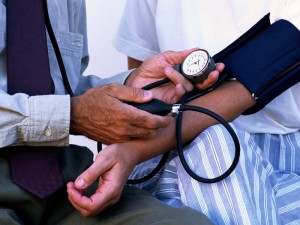 On November 13 last year, the American College of Cardiology and the American Heart Association made headlines with a startling announcement: Nearly half (46%) of all Americans now qualify for the hypertension high risk pool. Did the health of our nation suddenly plummet? No. The change was due to new guidelines, which dropped the accepted “normal” from 140/90 down to 120/80.
On November 13 last year, the American College of Cardiology and the American Heart Association made headlines with a startling announcement: Nearly half (46%) of all Americans now qualify for the hypertension high risk pool. Did the health of our nation suddenly plummet? No. The change was due to new guidelines, which dropped the accepted “normal” from 140/90 down to 120/80.
What were the reasons for such a drastic conversion? Although it is usually a safe bet to follow the money when predicting medical motivation, that was not the purported motive in this case. The guideline has no plans for a massive increase in the number of new prescriptions; in fact, it stresses that doctors need to focus on a comprehensive framework of healthier lifestyle changes for patients. The idea is to get to those at-risk before they reach a point of no return. But how will this idea translate in practice? And how does it affect you?
In order to understand the importance of the new guidelines, let’s take a look at what blood pressure actually is. For those unfamiliar with BP readings, the first number is the systolic blood pressure and the second one is the diastolic. Systolic is your blood pressure during a contraction (or beat) of your heart, and diastolic is the pressure when your heart lets go. The higher your blood pressure, the greater your risk of heart attack, heart failure and sudden cardiac death. The strain of hypertension takes a toll on your heart over time; your heart muscles can weaken and work less efficiently. Getting control early on can save you a world of woe later on.
For diagnostic purposes, the new guidelines divide the numbers into four levels: level one, normal, is below 120/80; level 2, elevated blood pressure, is 120-129/80; level three, stage 1 high blood pressure, is (130-139/80-89); and level four, stage 2 high blood pressure, is now 140/90 and higher.
For patients who fall into the elevated blood pressure range, doctor’s recommendations will sound surprisingly holistic: reducing salt and eating potassium-rich foods such as bananas, avocados and dark leafy vegetables, and making life style changes. Research has shown that simply altering your diet can bring down systolic blood pressure by as much as 11 points, and each additional healthy habit you adopt can bring it down another four to five points. This is where weight loss, quitting smoking, yoga and exercise will come into play; patients will be urged to limit alcohol. Few of them will need medication. For patients who fall into stages 1 or 2 high blood pressure, doctors will determine which medications will be added to treatments. And here, the guidelines also raise an important point – our methods for obtaining and monitoring blood pressure readings need to improve.
The tests taken at a doctor’s office are not necessarily a complete snapshot. Patients often have their first blood pressure taken immediately after they have rushed into the office, before ever seeing the doctor. They are not asked whether they have been smoking, drinking coffee or exercising less than 30 minutes ago, all of which are mitigating factors. Such poor clinical techniques can result in an invalid reading. My friend, Dr. H, prefers to see 15-20 proper readings before prescribing medicine. It takes long-term studies to figure accurate and effective BP goals.
This is one reason why patients themselves need to take a more active role – there is a need for education around self-monitoring and stress management. Under the new guidelines, patients are encouraged to use a wearable digital monitor that continually takes blood pressure readings. Dr. H recommends his patients buy a simple cuff for about $40 and check it multiple times. Close monitoring can reveal masked hypertension (when the blood pressure is normal in at your doctor’s, but high the rest of the time) or white coat hypertension (when the blood pressure is high in the office, but normal outside).
But although it’s a great idea to catch higher-risk people early for lifestyle modification, Dr. George Bakris, professor of medicine and director of the Comprehensive Hypertension Center at University of Chicago, is concerned that the new diagnostics can become a mandate for pharmacologic treatment without consideration of the patient’s risk level. The guidelines are glitched by a problem inherent in any set of standards: One size does not fit all. Dr. Bakris notes that for seniors, the new guidelines place unrealistic expectations – it suggests that 30-year-olds and 80-year-olds should have the same goal, but achieving that is impossible for many seniors. On the other end of the spectrum, normal blood pressure can be much lower for children, and athletes are in their own category as well. Dr. Bakris also pointed out that “proper blood-pressure measurement is critical, but time consuming. The unintended consequence may be that many people, now labeled as patients with hypertension, receive pharmacologic therapy [instead] that’s unlikely to provide benefit given their low absolute risk, and they may therefore experience unnecessary adverse events.”
In conclusion: Overall risk factors need to be considered for truly effective treatment. Dr. Bakris believes that while lower BP targets make sense for high-risk patients, for everyone else it seems more reasonable to continue defining hypertension as a BP of 140/90 or higher. So, what should you do? It is becoming increasingly apparent that making healthy lifestyle changes may be the key to preventative measures for myriad human health problems. So – start young, live well and prosper.


